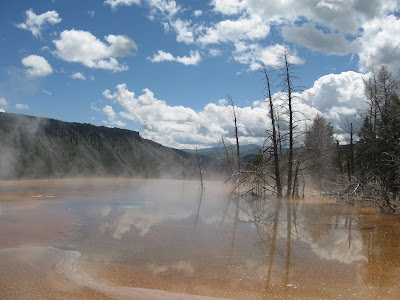 |
| Mormon Row, in Grand Teton National Park. |
The "hole" in the name "Jackson Hole" was originally used to describe a valley, crude as that seems to us now. The Jackson Hole area is actually one big valley next to the Tetons, and they are grand, especially from the backs of our bikes, rented for a tour of the area. Go see it for yourself!




